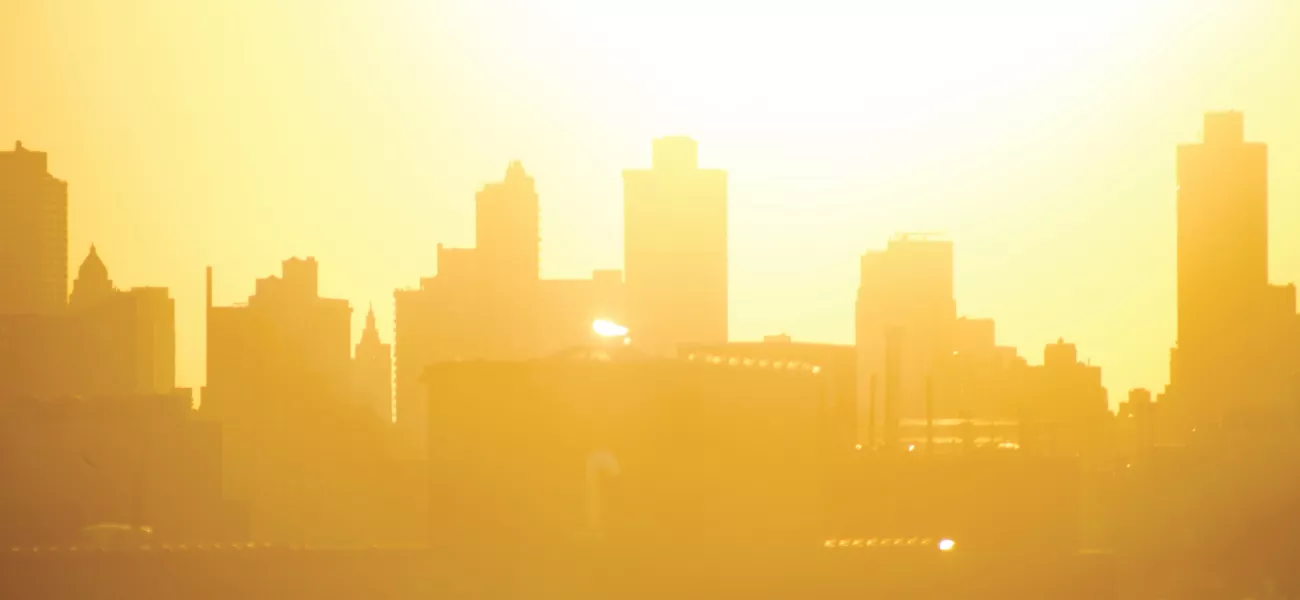
Addressing the challenges of climate change is among the most pressing concerns for city authorities. A recent ebook from Axis builds on research conducted by ThoughtLab. It explores the ways in which video surveillance technology is playing an increasingly vital role in preventive efforts to tackle the impacts of extreme weather and improve sustainability.
Climate change end extreme weather pose an almost existential threat to cities. Not only are these population dense locations major emissions contributors and carbon consumers, but the impact of any extreme weather event is considerably magnified. Even minor local flooding can quickly impact thousands of citizens. Businesses are disrupted, alternative transport routes overwhelmed, productivity drops. And this does nothing to mention any direct costs of repair and clean up nor threats to public health and safety.
To tackle this threat, leading cities are equipping themselves with a range of solutions to inform their decision making, reduce emissions, and to provide early-warning ahead of extreme events. Surveillance technology has fast become a vital contributor to these solutions, providing real-time data and powerful analytics capabilities at the edge.
Improving traffic flow and encouraging alternative travel methods can be one of the single most effective ways cities can directly improve their emissions levels. We explore this in depth in our recent urban mobility blog.
Here we highlight additional examples of how these leading cities are using surveillance technology, taken from our recent ebook, Surveillance technology for future-ready cities. This ebook supplements a recent Axis sponsored study from ThoughtLab, exploring the most effective strategies and digital solutions used by city leaders.
Read the Surveillance technology for future-ready cities, here.
Explore ThoughtLab’s research, here.
Predictive flood warnings
Cameras and IoT sensors can help to monitor areas that are prone to flooding and alert officials once a pre-determined threshold is met, such as river water levels reaching specific heights. This allows you to quickly put measures in place, from communicating the crisis with affected communities via loudspeaker or text message through to arranging evacuation if needed.
Low emission and clean air zones
In efforts to reduce traffic emissions, many city authorities have rolled out low emission or clean air zones (CAZ) that impose charges on entering specified areas when vehicles do not meet emission standards. Establishing and enforcing these zones requires cameras set up with automatic license plate recognition technology and boundary crossing, for automatic fee issuing and registration checks.
Air quality monitoring
Surveillance systems provide you with vital infrastructure for air quality monitoring efforts. The presence of IP-based hardware guarantees both power and network access for any sensors you need to provide particulate matter (PM) readings, or otherwise. What’s more, cameras provide ‘eyes on the scene’, allowing for remote visual assessment of the causes behind high pollution readings. These systems work hand-in-hand with traffic management systems, providing real-time data of how effective initiatives have been in reducing emissions.
Noise pollution management
Noise pollution is a serious environmental threat for people’s health and safety in cities, according to the WHO. A combination of high-quality microphones, acoustic sensors, and AI analytics can help to identify and monitor excessive noise levels, such as at intersections that become too busy at peak times of the day. Video surveillance provides visual verification. This same data then provides confirmation of the effectiveness of any remedial initiatives taken.
Preventing illegal dumping
The illegal dumping of waste (also known as ‘fly-tipping’) on streets and into rivers is an issue for many cities. Surveillance technology can help with deterrence and to identify illegal fly-tipping. Installing cameras at known hotspots can discourage this behavior. When combined with license plate recognition technologies, you can capture vehicle details for legal action and alert relevant authorities when known, watch-list vehicles visit geofenced locations.
Learn more
Surveillance technology doesn’t only help cities tackle environmental challenges. Axis-powered solutions are supporting local authorities across the world drive new efficiencies, productivity, and save money, while improving sustainability, safety and the lived experience of citizens.
